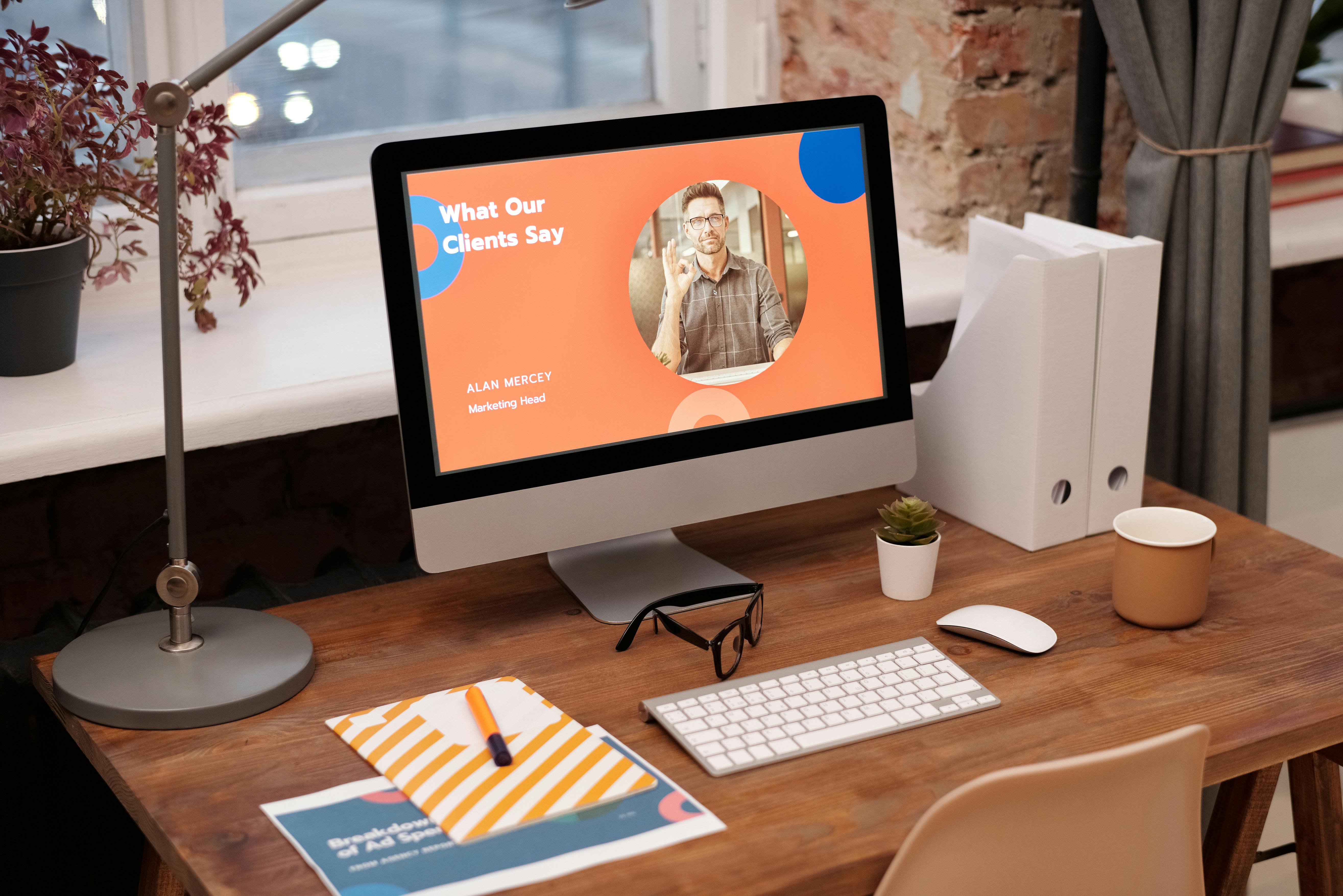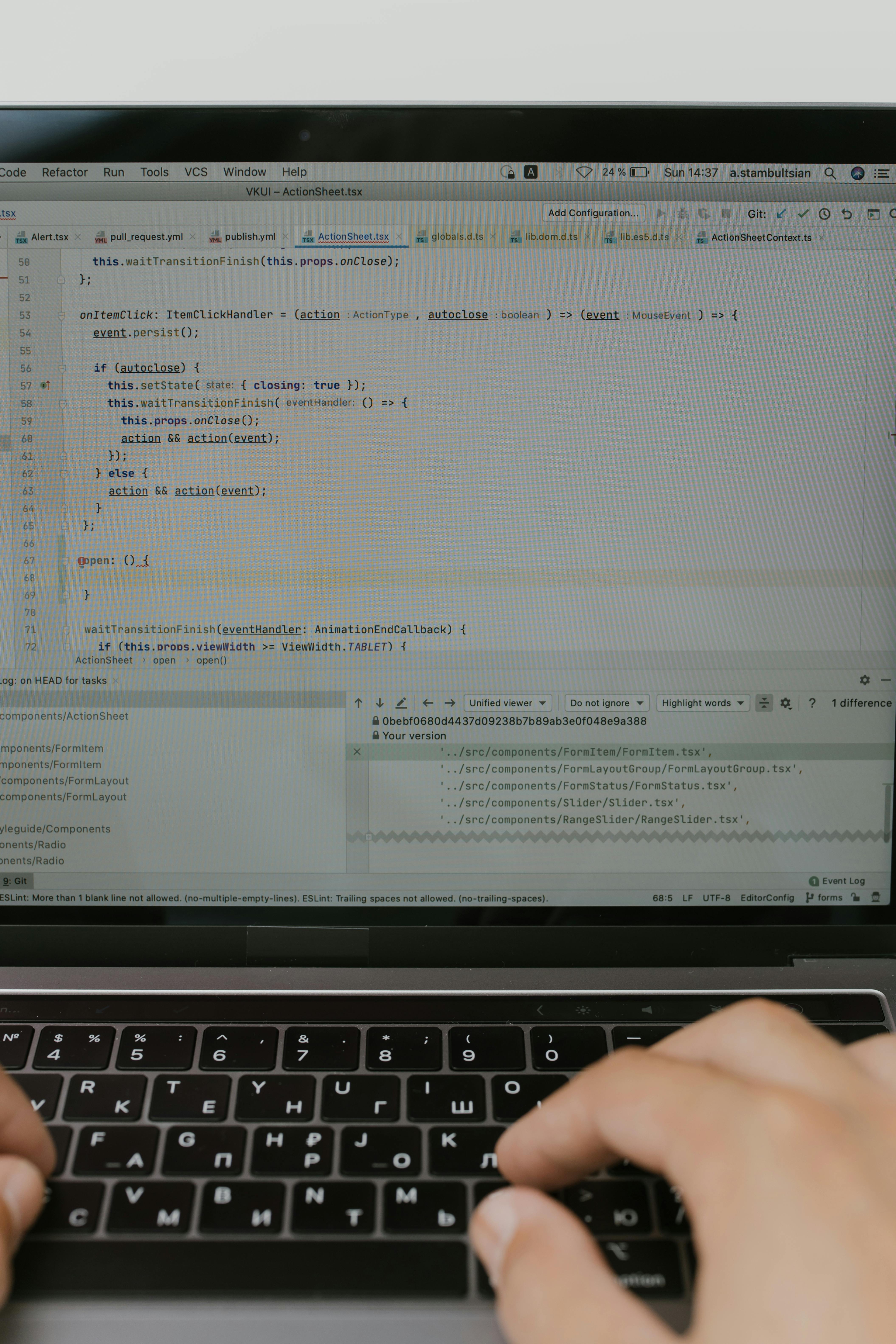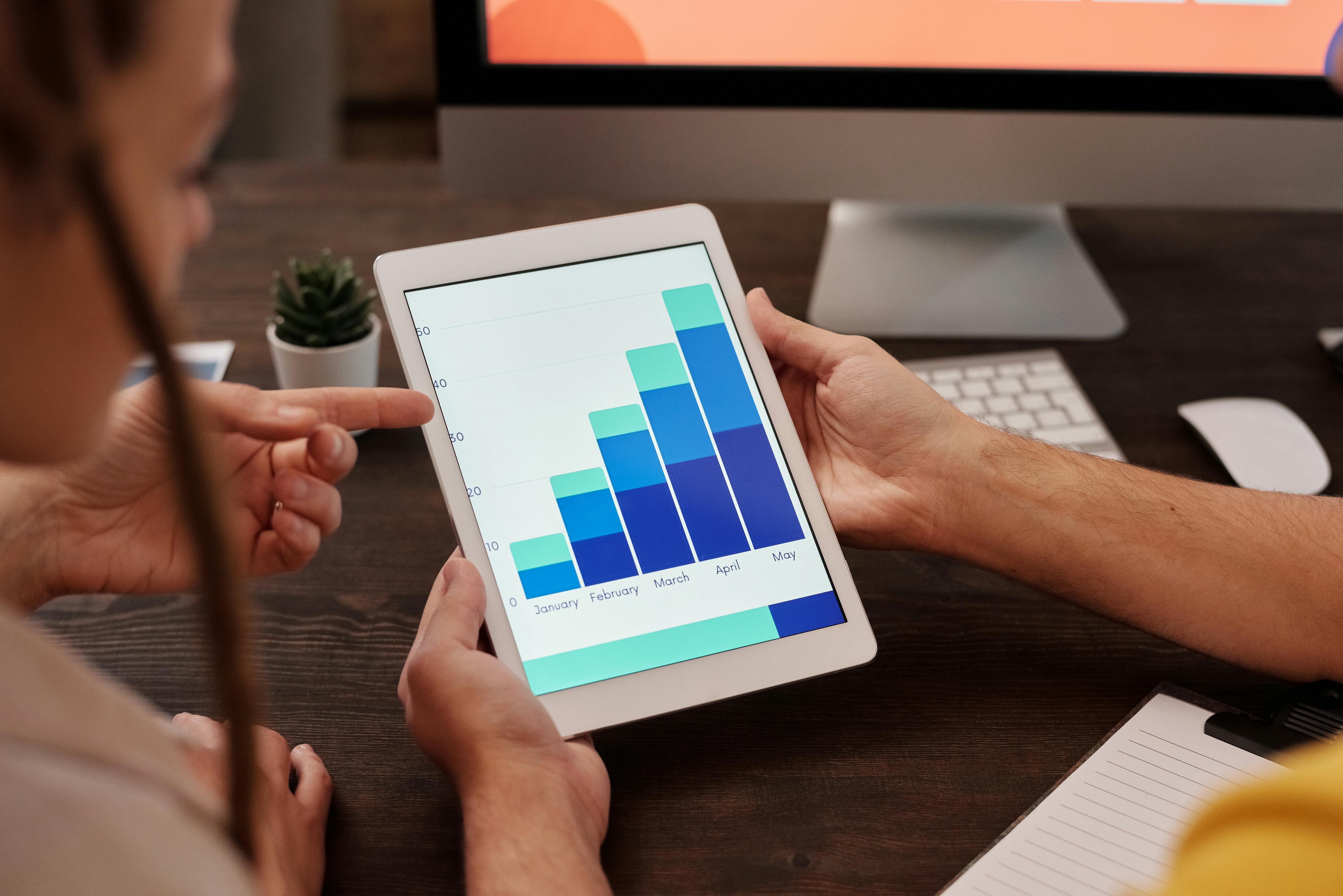AI Business Software in 2025: The Tools Powering the Next Generation of Companies
In 2025, the line between human decision-making and artificial intelligence has almost disappeared. From small startups to global enterprises, AI business software has evolved from an optional upgrade to an essential driver of success. Companies that once relied on intuition now depend on machine learning dashboards, predictive analytics, and automation systems that make smarter, faster decisions than ever before.
It’s no longer a question of whether a company uses AI — it’s a matter of how deeply it’s integrated into their daily operations. Whether you're managing payroll, forecasting market trends, or personalizing customer experiences, AI tools have become the engine of modern business performance.

Why 2025 Marks a Turning Point
2025 represents a shift not only in technology but in corporate mindset. Businesses now treat AI software as strategic infrastructure — like electricity or the internet. According to a 2025 survey by PwC, 86% of U.S. executives report that AI has increased productivity by at least 30% across departments.
Artificial intelligence is no longer viewed as a luxury tool for tech companies. It’s a necessity — from real estate firms predicting market trends, to law firms automating document reviews, to e-commerce giants managing millions of customer interactions seamlessly.
In this article, we’ll explore the most influential categories of AI business software shaping the American economy in 2025 — and how they help businesses grow faster, smarter, and stronger.
“AI doesn’t replace people — it replaces inefficiency.” — Harvard Business Review, 2025
The AI Revolution in Everyday Business Operations
Before AI entered the boardroom, businesses operated in silos — departments disconnected, decisions delayed, and data lost between tools. Today, AI-powered platforms have merged these systems into one unified ecosystem. Every invoice, email, meeting, and forecast feeds into intelligent algorithms that deliver insights in real time.
From Manual to Autonomous Workflows
Imagine a retail company where sales data automatically updates marketing campaigns, predicts supply shortages, and even generates restock orders — without a single human intervention. That’s the reality of 2025. AI doesn’t just analyze; it acts.
Tools like Zoho AI Suite and HubSpot SmartFlow are redefining how businesses function. They learn from employee behavior, suggest automation patterns, and optimize workflows in ways traditional software never could.

Why Businesses Are Adopting AI Faster Than Ever
There are three main forces driving the mass adoption of AI business software:
- Cost Efficiency: AI tools can cut operational costs by up to 45% by automating manual tasks.
- Data Intelligence: Every department becomes smarter through continuous learning algorithms.
- Competitiveness: In saturated markets, automation is no longer an advantage — it’s survival.
In other words, the businesses that fail to adopt AI today risk being replaced by those who already have. The market no longer rewards hard work alone — it rewards smart work powered by AI.
Next, we’ll dive into the top AI-powered business tools dominating the U.S. market in 2025 — from CRM systems to financial analytics platforms that predict the future before it happens.
Top AI Business Software in the USA 2025
With thousands of AI tools flooding the U.S. market, only a few have become truly indispensable to modern companies. These platforms combine deep learning, automation, and predictive analytics to help businesses grow faster while spending less. Let’s explore the leaders shaping the industry.
1. Salesforce Einstein GPT — The King of AI CRM
Salesforce remains at the top of the CRM game, but its true power in 2025 comes from Einstein GPT. This AI engine not only predicts customer behavior but also writes emails, builds campaigns, and generates reports autonomously.
For American companies, Einstein GPT has become the go-to software for understanding customer journeys in real time — allowing sales reps to act before competitors even realize an opportunity exists.

2. Microsoft Copilot for Business
Microsoft Copilot has revolutionized how employees interact with software. Integrated into Word, Excel, and Teams, Copilot now functions as a virtual assistant for the entire organization. It drafts presentations, writes meeting notes, summarizes contracts, and answers complex data queries instantly.
According to a 2025 Forrester report, businesses using Copilot reduced administrative workloads by 38% and improved communication accuracy by 21%.
3. Zoho AI Suite — The Small Business Hero
While Salesforce and Microsoft dominate large corporations, Zoho has captured the heart of small business owners. Its AI-powered suite helps manage projects, automate marketing, and track cash flow using conversational commands — all within a single dashboard.
What sets Zoho apart is accessibility. With affordable pricing and a user-friendly interface, it has become the go-to choice for startups looking to compete with giants using smart automation.

4. IBM WatsonX — The Predictive Powerhouse
IBM WatsonX is all about data intelligence at scale. This tool helps corporations forecast financial outcomes, identify risks, and optimize operations using real-time machine learning. From hospitals to financial institutions, WatsonX is trusted for mission-critical decisions.
In 2025, it’s estimated that 60% of Fortune 500 companies use IBM’s AI stack in some form — proof that predictive analytics has become the new backbone of corporate planning.
“Businesses that leverage predictive AI in 2025 make decisions five times faster and 70% more accurately.” — Deloitte Insights, 2025
Real Case Studies: How AI Transformed American Companies
To understand the true impact of AI business software, it’s best to look at real results. Across the United States, businesses in every industry have turned automation into their competitive edge. Here are three examples that define the 2025 success story.
Case Study 1: FinTech Startup Automates Growth
A California-based fintech startup adopted Zoho AI Suite to automate its financial reports and marketing. Within six months, it reduced accounting errors by 85% and increased customer engagement by 40%. The AI system now predicts which clients are likely to invest again — saving the team hundreds of hours of manual research.
Case Study 2: Manufacturing Company Boosts Efficiency
In Texas, a medium-sized manufacturing company integrated Microsoft Copilot with its ERP system. The result? Production planning time dropped from 10 hours to just 45 minutes. AI now automatically analyzes machine performance, predicts downtime, and schedules maintenance before problems arise.

Case Study 3: Real Estate Agency Doubles Its Leads
A real estate agency in Florida switched from manual client tracking to Salesforce Einstein GPT. The system started generating personalized recommendations for potential buyers, which increased closing rates by 52%. Their agents now spend more time closing deals and less time buried in spreadsheets.
These success stories prove one truth: AI doesn’t just make work easier — it makes businesses unstoppable. Whether through automation, data insights, or customer personalization, AI-powered tools have become the foundation of competitive success in 2025.
The Future of AI in Business: Beyond Automation
While 2025 has solidified AI as the core of business infrastructure, experts agree that the next phase won’t just be about automation — it’ll be about augmentation. The true power of AI business software lies not in replacing humans but in expanding human capability.
Instead of simply automating repetitive tasks, the most advanced systems now serve as thinking partners. These tools analyze, suggest, and sometimes even challenge human decisions, providing a multi-dimensional perspective that humans alone can’t reach.

Human + Machine Collaboration
The businesses thriving in 2025 are not the ones with the most automation — they’re the ones that have mastered collaboration between humans and machines. A report by Gartner revealed that companies that combined AI augmentation with human supervision saw a 65% higher innovation rate than those relying solely on AI.
For example, marketing teams are now using AI writing assistants not just to save time but to generate multiple creative angles at once. Meanwhile, financial analysts use predictive dashboards to simulate potential scenarios before committing to a decision — turning uncertainty into clarity.
From Assistants to Advisors
In the next five years, AI systems are expected to transition from “assistants” to “advisors.” Instead of waiting for commands, they’ll proactively offer insights based on observed behavior and real-time market data. Imagine an AI that notices a dip in website traffic and instantly drafts a recovery strategy — complete with A/B testing plans and marketing copy.
“By 2030, 75% of business decisions will involve some form of AI collaboration.” — McKinsey, Future of Business Intelligence Report 2025
Ethical and Legal Challenges of AI Business Software
As businesses grow increasingly dependent on AI, the legal and ethical landscape becomes more complex. AI can analyze millions of data points in seconds — but with great power comes great responsibility. Companies must now balance innovation with accountability.
Data Privacy Concerns
Every AI system thrives on data. However, when that data includes customer information, purchase history, and personal behavior, privacy becomes a high-stakes issue. Regulators in the U.S. are now enforcing stricter guidelines under laws like the California Consumer Privacy Act (CCPA) and its federal equivalents.
To comply, companies are investing in ethical AI frameworks — software layers that automatically anonymize and secure user data before analysis. In 2025, these frameworks aren’t just a legal safeguard — they’re a marketing advantage. Consumers now prefer brands that promise transparent data use.

Bias and Fairness
AI systems learn from historical data — and history isn’t always fair. When unchecked, machine learning models can inherit biases from the datasets they’re trained on, leading to unfair decisions in hiring, finance, or marketing.
Leading AI platforms now include “bias detection modules” — algorithms that test fairness and transparency before deployment. For instance, IBM’s WatsonX uses explainable AI (XAI) models that clearly show how each decision is made, giving human managers final oversight.
The Rise of AI Compliance Officers
Just as cybersecurity created a new professional role decades ago, the AI era has birthed a new job title: AI Compliance Officer. These specialists ensure that company algorithms meet ethical standards, audit model performance, and manage risk across digital ecosystems.
As one executive noted in 2025, “AI used to be a feature. Now it’s a responsibility.” Businesses that fail to integrate ethical safeguards risk not just fines — but reputation collapse in an increasingly aware digital society.
AI’s Role in Business Decision-Making
For decades, major business decisions were made in conference rooms filled with spreadsheets, gut instincts, and late-night debates. But in 2025, boardrooms look very different. The loudest voice in the room isn’t a CEO — it’s a dashboard.
Modern executives no longer ask, “What do we think will happen?” They ask, “What does the AI predict?” From financial forecasting to marketing performance, AI-driven analytics now hold a permanent seat at the decision-making table.

Predictive Analytics at the Core
Predictive analytics has become the cornerstone of strategic planning. AI systems analyze trillions of data points — from social trends to currency shifts — and forecast business outcomes with staggering accuracy. The result? Fewer surprises and more confident leadership.
In the U.S., financial firms using predictive AI have seen revenue grow 42% faster than those relying solely on human analysts. AI-powered tools like Palantir Foundry and Tableau AI can now identify unseen market opportunities days before competitors react.
“AI doesn’t just predict the future — it prepares you for it.” — The Wall Street Journal, 2025
Emotion Meets Logic
But decision-making isn’t just about numbers. Some AI systems are now designed to read emotional tone, detect frustration, or measure motivation from voice and text. This form of emotional AI helps managers lead more empathetically while maintaining analytical precision.
For example, call center AI platforms now assess customer sentiment in real-time and guide agents on how to respond — creating a seamless blend of emotional intelligence and data science.
The future of business decisions is not cold and mechanical — it’s a perfect balance between machine logic and human empathy.
AI and Workforce Transformation: The Human Side of Automation
AI business software doesn’t just change how companies operate — it’s rewriting the very definition of work. Across the U.S., the shift toward intelligent automation is creating a new class of workers: those who collaborate with AI rather than compete with it.
Contrary to the fear of “robots replacing humans,” studies from the World Economic Forum show that AI will create 97 million new jobs globally by 2027 — roles that didn’t exist a decade ago. Titles like “Prompt Engineer,” “AI Workflow Designer,” and “Data Ethics Analyst” are now in high demand.

Upskilling the Workforce
Forward-thinking companies aren’t cutting jobs — they’re reskilling employees to work alongside machines. Google, IBM, and Amazon have launched free AI certification programs for staff to understand automation tools, improving company-wide adaptability.
In smaller businesses, employees who once handled data entry now manage AI systems that analyze that same data, giving them a higher-value role in the company’s strategy.
Embracing AI Culture
AI integration isn’t just a technological shift — it’s cultural. The best organizations of 2025 foster a workplace where humans trust AI decisions without feeling threatened. Open communication, transparency, and shared goals between man and machine define the new workplace harmony.
In essence, AI doesn’t eliminate the human element of business — it amplifies it. By automating the mundane, it allows employees to focus on innovation, creativity, and relationship-building — the things machines can never replicate.
The ROI of AI Business Software: Measuring the Impact
As companies across the United States embrace artificial intelligence, one question always follows: Is the investment worth it? In 2025, the answer is clear — yes, beyond expectation. Businesses that fully integrated AI tools reported a 34% increase in annual revenue and a 41% reduction in operational costs, according to McKinsey’s latest data.
Quantifying the Transformation
Before AI, departments operated in isolation. Now, through shared dashboards and cross-functional insights, they communicate seamlessly. Every metric — from employee performance to customer satisfaction — is traceable and improvable in real time.
Even startups benefit. A 15-person e-commerce company in Denver implemented Salesforce Einstein GPT and Copilot for Business; within three months, customer retention grew by 26% while their ad spend dropped 19%. AI effectively turned guesswork into precision targeting.

The Ripple Effect on Industries
The AI revolution isn’t limited to tech firms. In 2025, insurance companies use predictive algorithms to assess claim risks instantly, law firms automate document review using NLP tools, and manufacturing giants optimize supply chains with autonomous systems. Every sector is now part of the same AI-driven ecosystem.
These transformations ripple outward — improving product quality, consumer trust, and ultimately, global competitiveness. The U.S. remains at the forefront of this technological movement, exporting AI knowledge and tools worldwide.
“The companies that learn fastest — through AI — win the future.” — Harvard Business School, Innovation Report 2025
The Final Word: The Future Belongs to AI-Driven Businesses
The story of AI business software in 2025 is not just about code, data, or algorithms. It’s about transformation — the transformation of how people work, how companies think, and how innovation becomes routine. The organizations thriving today aren’t those with the most resources, but those with the most adaptability.
Every company, from a two-person startup to a Fortune 500 giant, now faces a defining choice: evolve with AI or risk being left behind. Those who embrace the shift don’t just automate — they amplify. They create a future where ideas flow faster, decisions become smarter, and growth becomes exponential.

What’s Next?
As AI continues to advance, the next wave of innovation will come from integration — connecting all AI systems across industries into unified ecosystems. The future business environment will be one where software doesn’t just automate tasks, but manages entire strategies autonomously.
And yet, amidst all this progress, one thing remains true: human creativity will always be the spark that drives the machine. The companies that remember this balance will not only survive the AI era — they’ll define it.
Call to Action
If you’re a business owner or professional ready to modernize your workflow, now is the time to explore AI integration. Check out our next guide: “Top AI Tools for Small Businesses in 2025: Automate and Scale Smarter.”
Because the future isn’t waiting — it’s learning.
